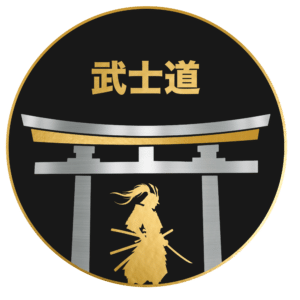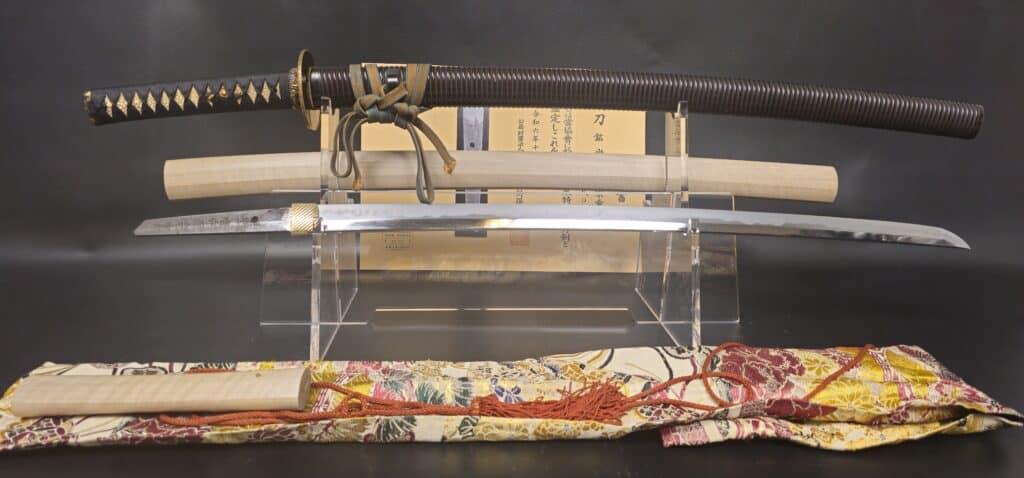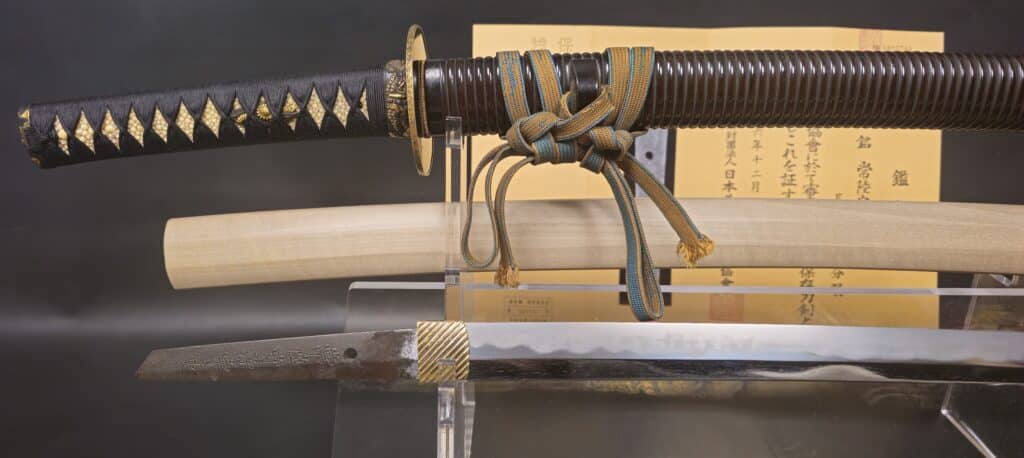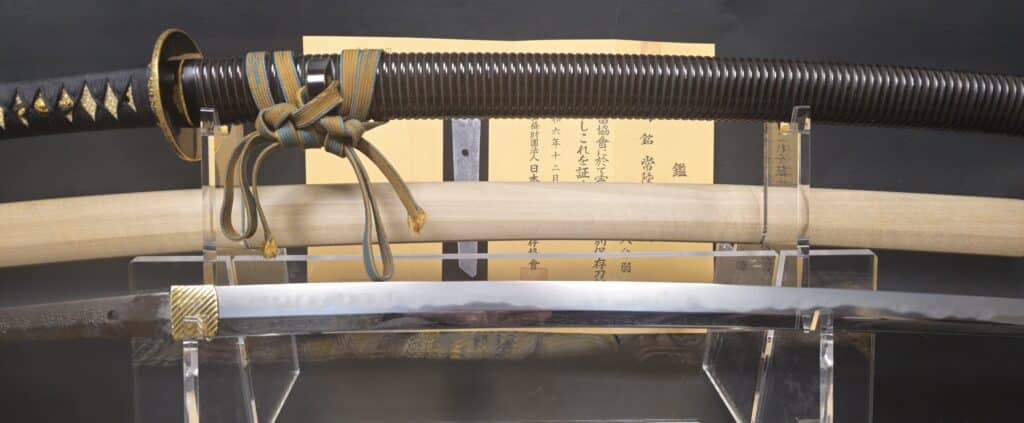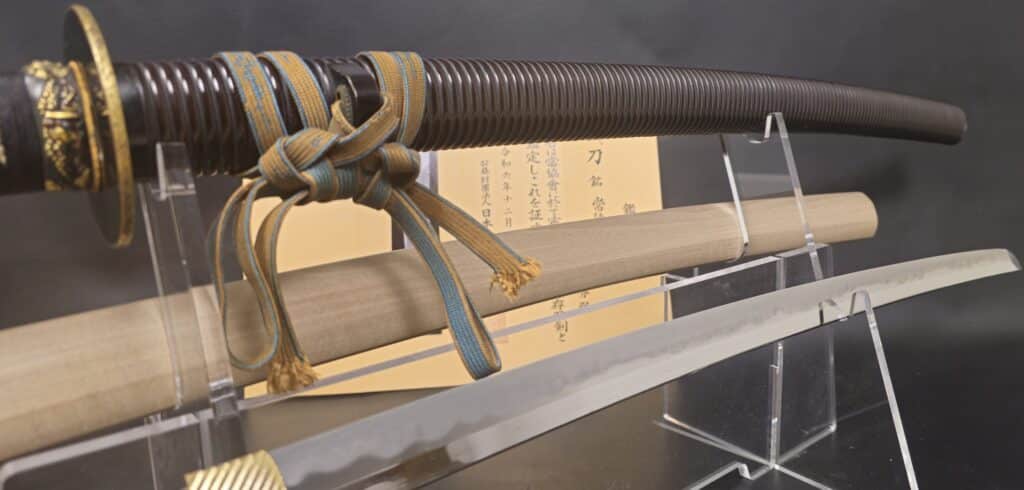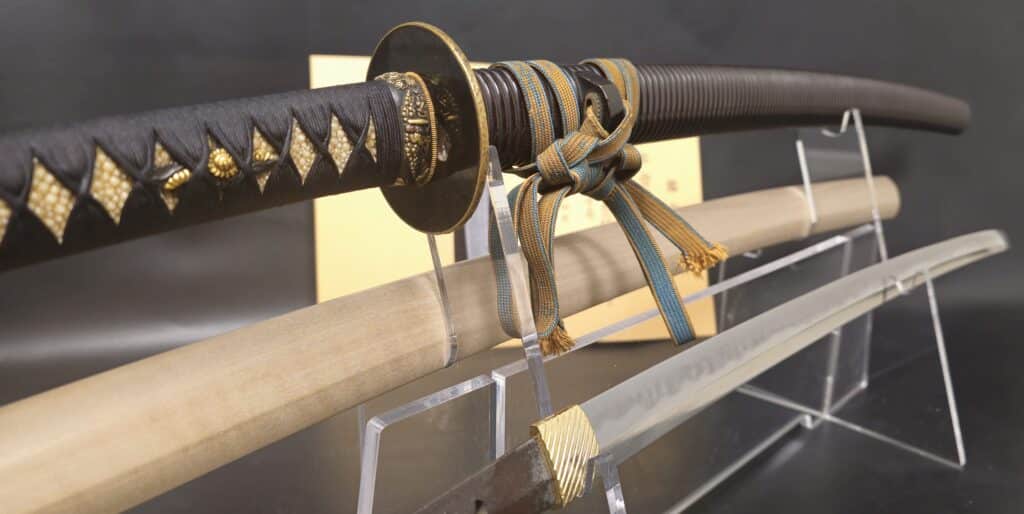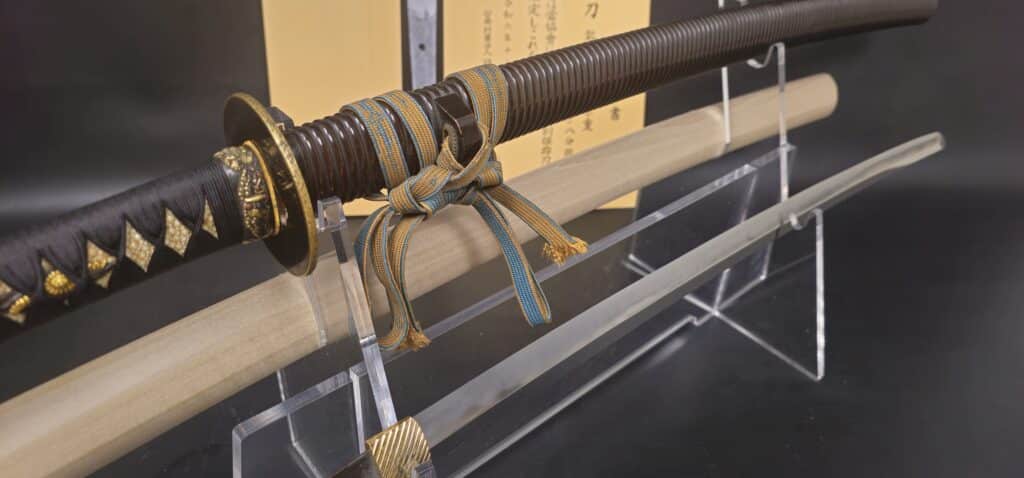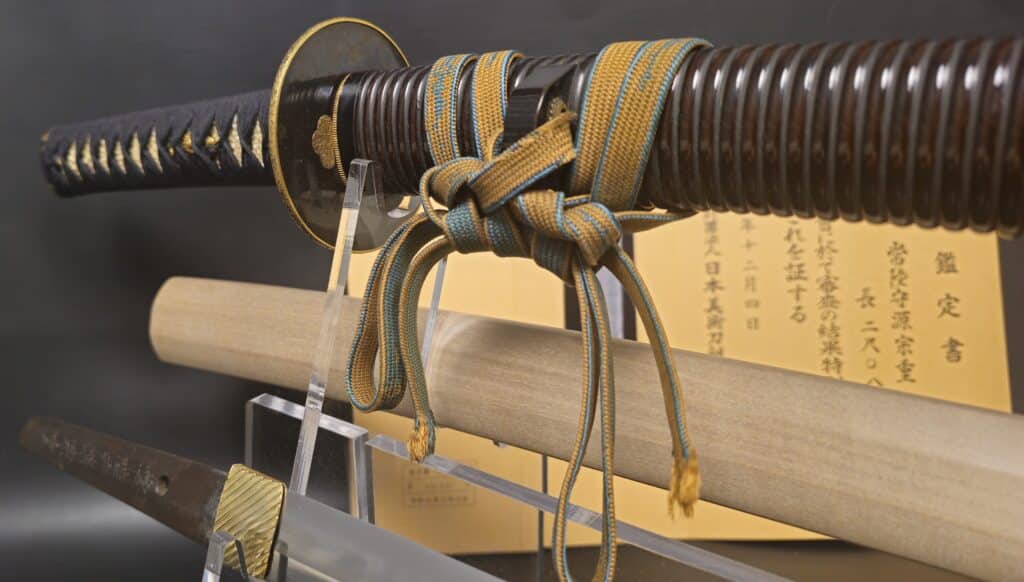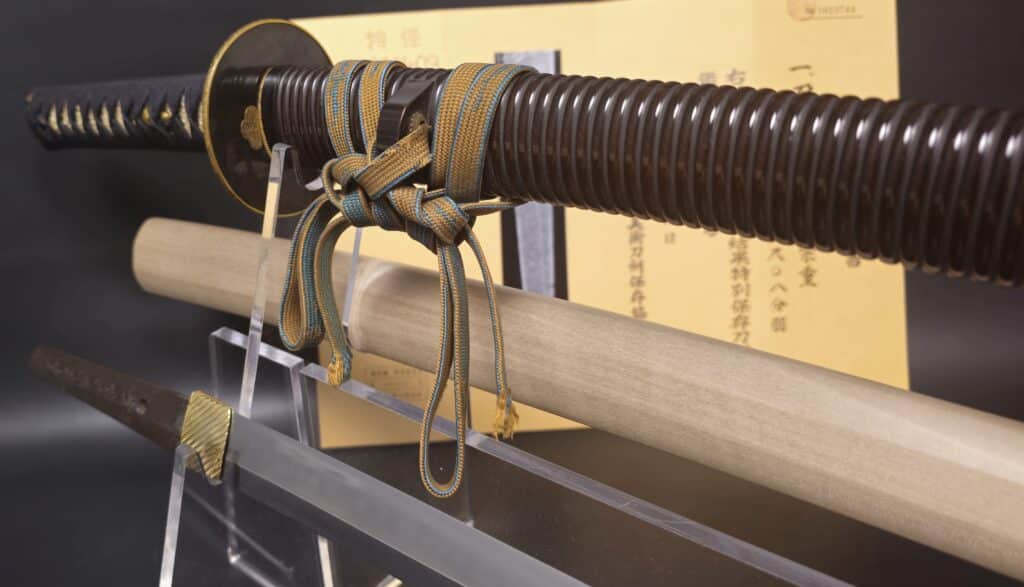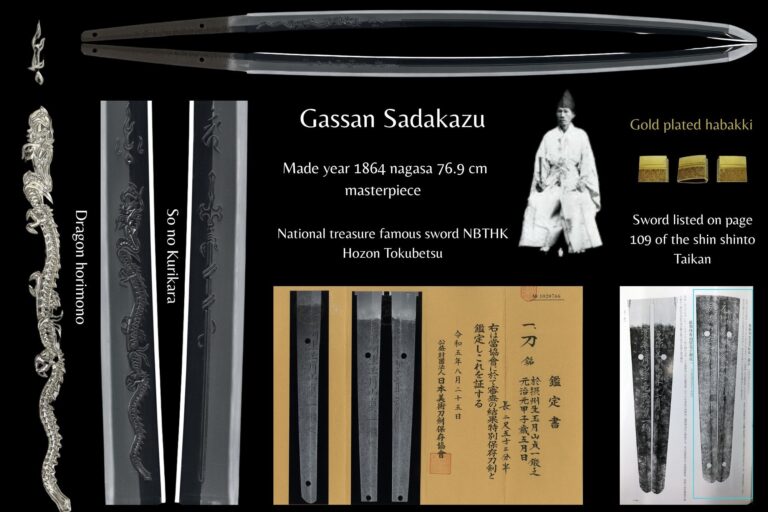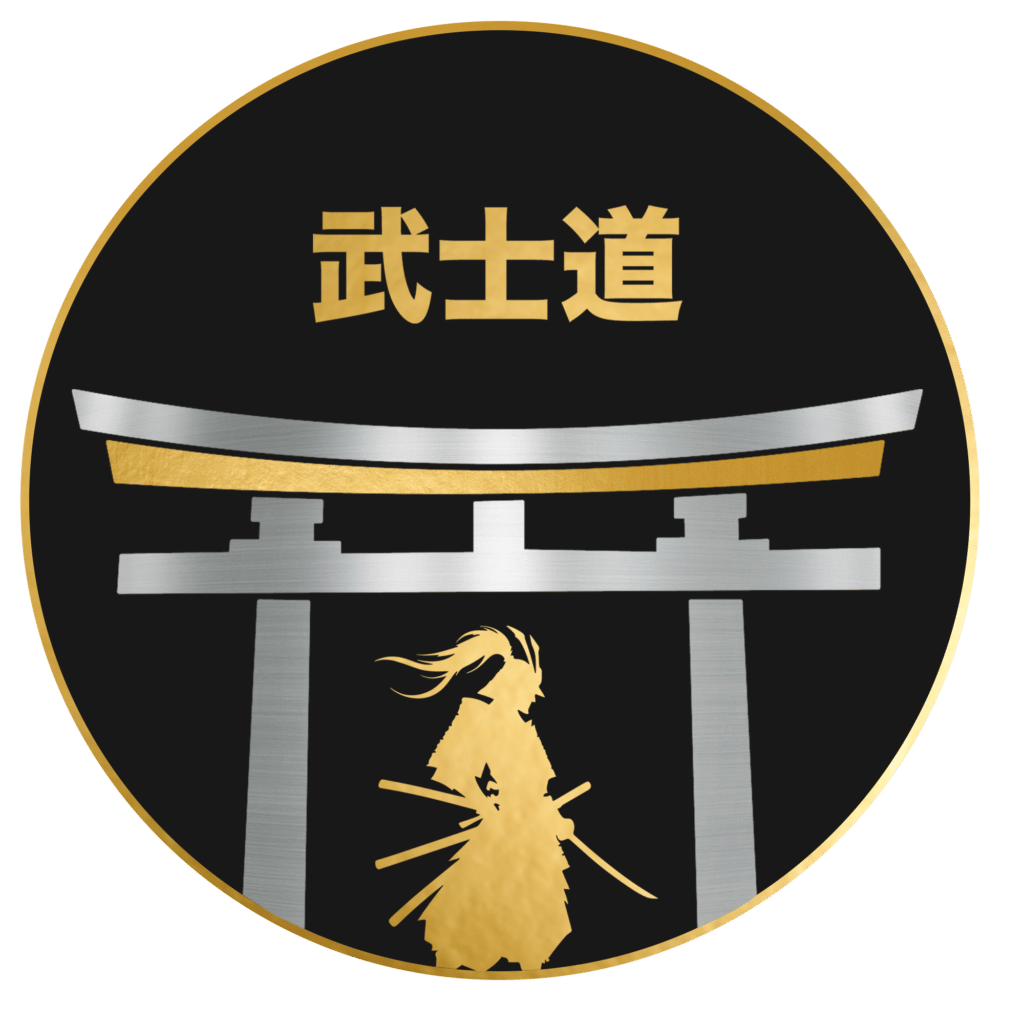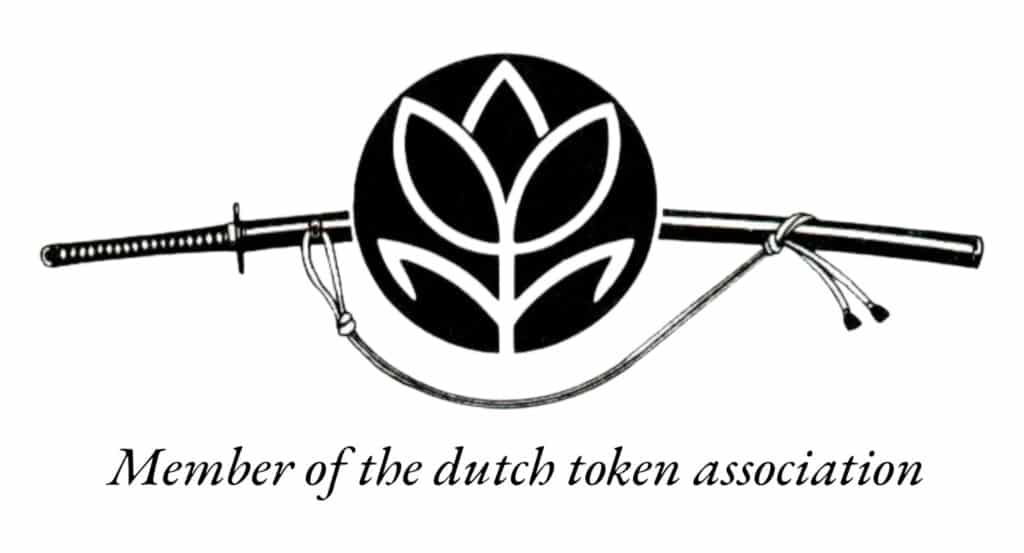Description
Magnificent Japanese Samurai Sword Katana Muneshige NBTHK Tokubetsu
Muneshige received the title of Hitachi no Kami. The imperial court only gave the title of kami(守) to the swordsmiths who did excellent work. It was honorable for any swordsmiths to receive such a title and only extremely skilled swordsmiths deserved this title.
The reputation of Sukehiro was closed to Kotetsu, another renowned swordsmith in the Edo period. It is said that Muneshige’s sword-forging technique was so great that he forged some swords on behalf of his master Sukehiro.
The blades forged by Muneshige are categorized as Osaka Shinto. Shinto is Japanese Sword generic term that refers to the swords forged during 1596-1781. The blades made in Osaka area during this period are called Osaka Shinto. There are many famous swordsmiths in this Osaka Shinto era. After Hideyoshi Toyotomi built Osaka castle, Osaka city flourished as a castle town and became the business center. Many swordsmiths moved to Osaka to look for better opportunities. They not only forged swords for those Samurai who lived in Osaka but also for feudal lords nationwide. Ikanshi Tadatsuna(Awataguchi Omi no Kami Tadatsuna), Inoue Shinkai, and Tsuda Sukehiro are the most famous ones among those many swordsmiths.
Hamon: mottled pattern of boiled alternate eyes, with variations in height, creating a gorgeous hamon.
Sand flow and gold lines work in the middle of the blade.
Mounting
Tsuba oval shaped shakudo base with a gold-wrapped border.
Fuchi-gashira Shakudo base with highly engraved figures and landscapes, then painted in gold.
Saya Black engraved saya (the black has turned reddish over time. It is a wonderful color)
Menuki Shakudo base with highly engraved chrysanthemums, then painted in gold.
Nagasa 62.9cm
Sori 0.9cm
Mekugi-ana 1
Width 2.88cm
Kissaki 1.94cm
Weight 585 g
Period Edo period
Inscription: Made by Hikoneju Munenori
NBTHK Tokubetsu Hozon Extra ordinarily Worthy of Preservation.
